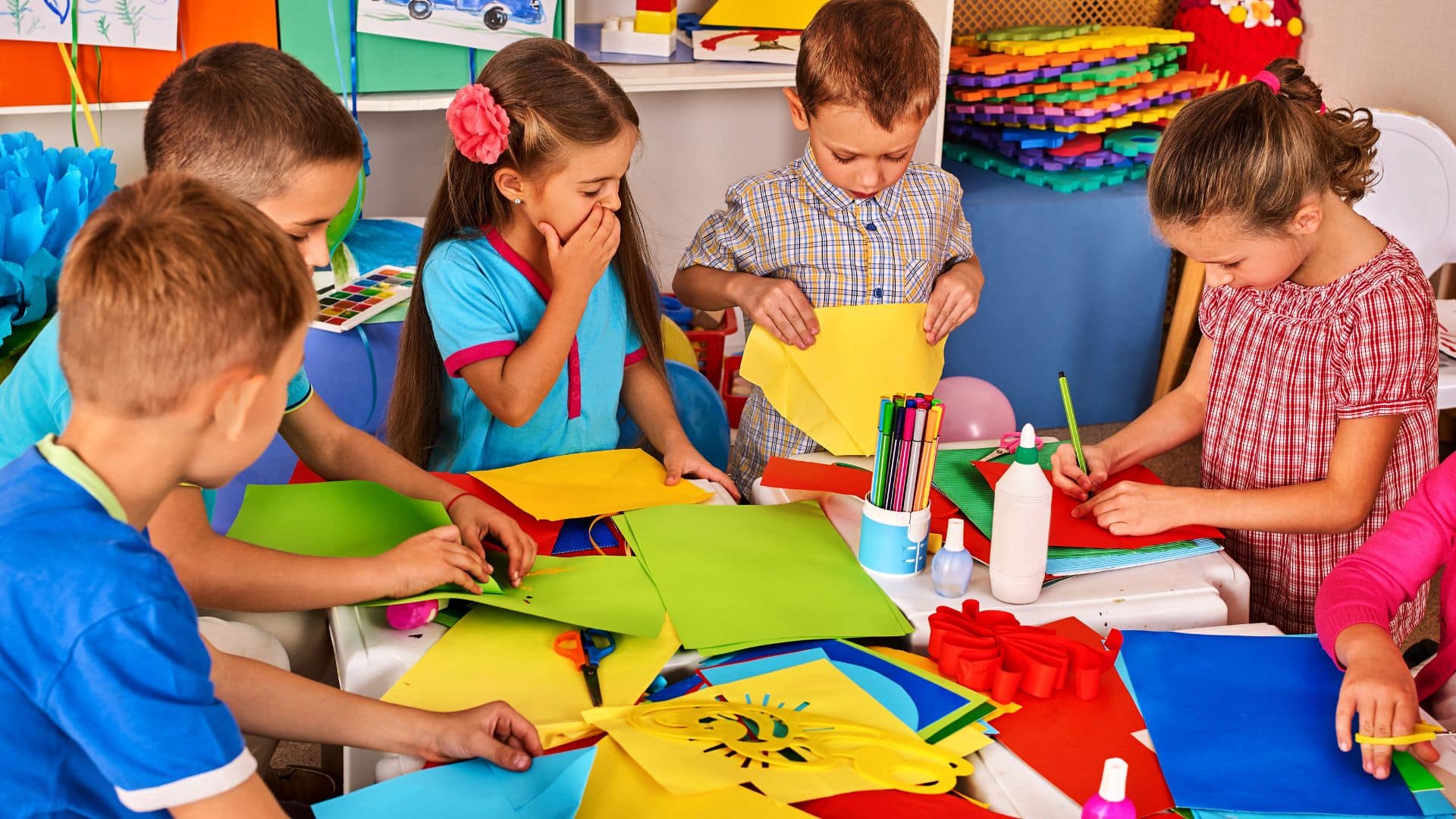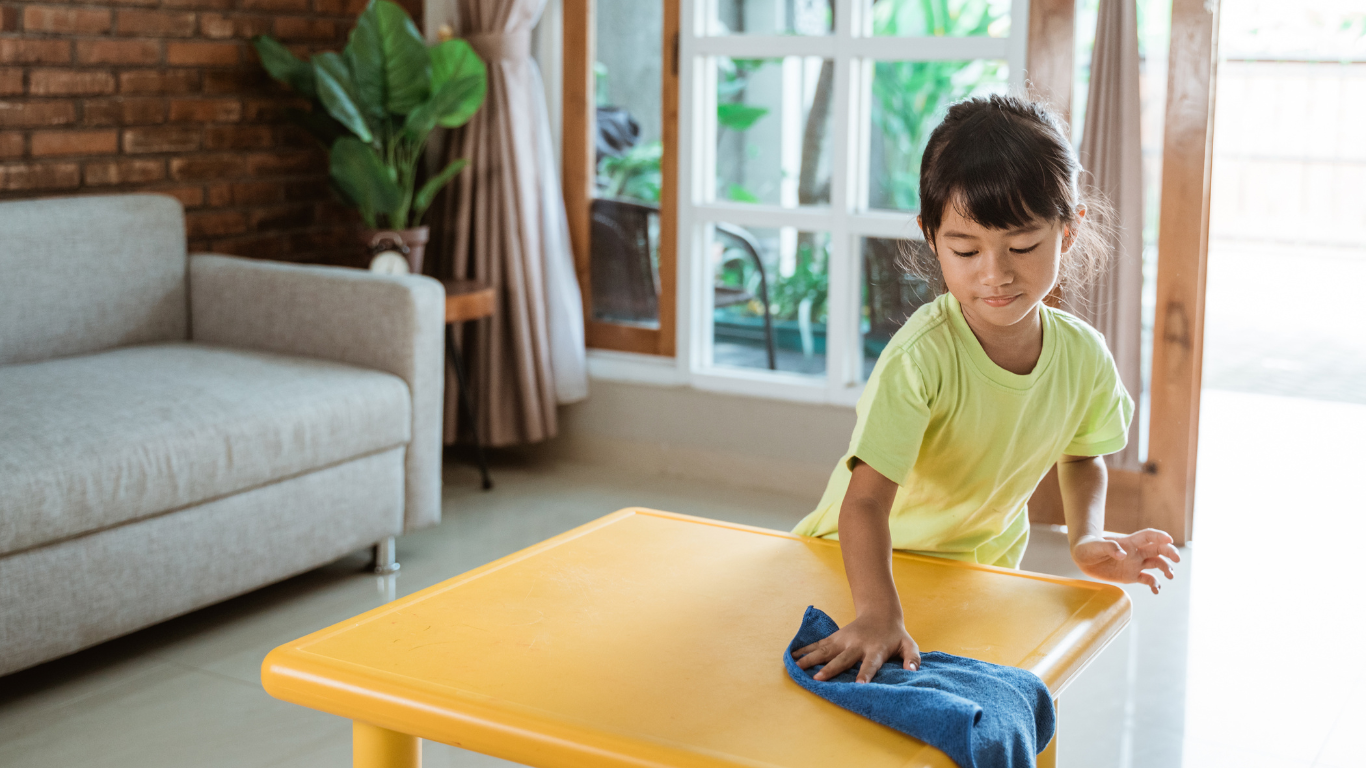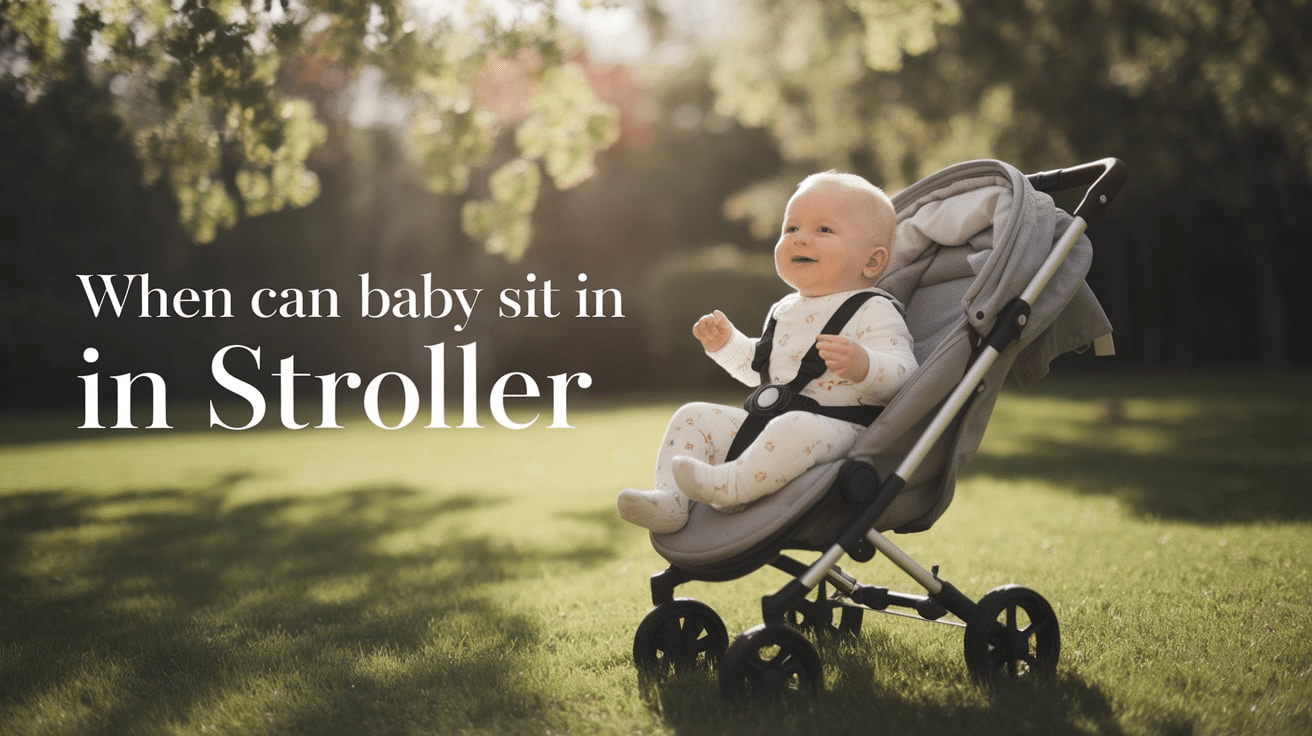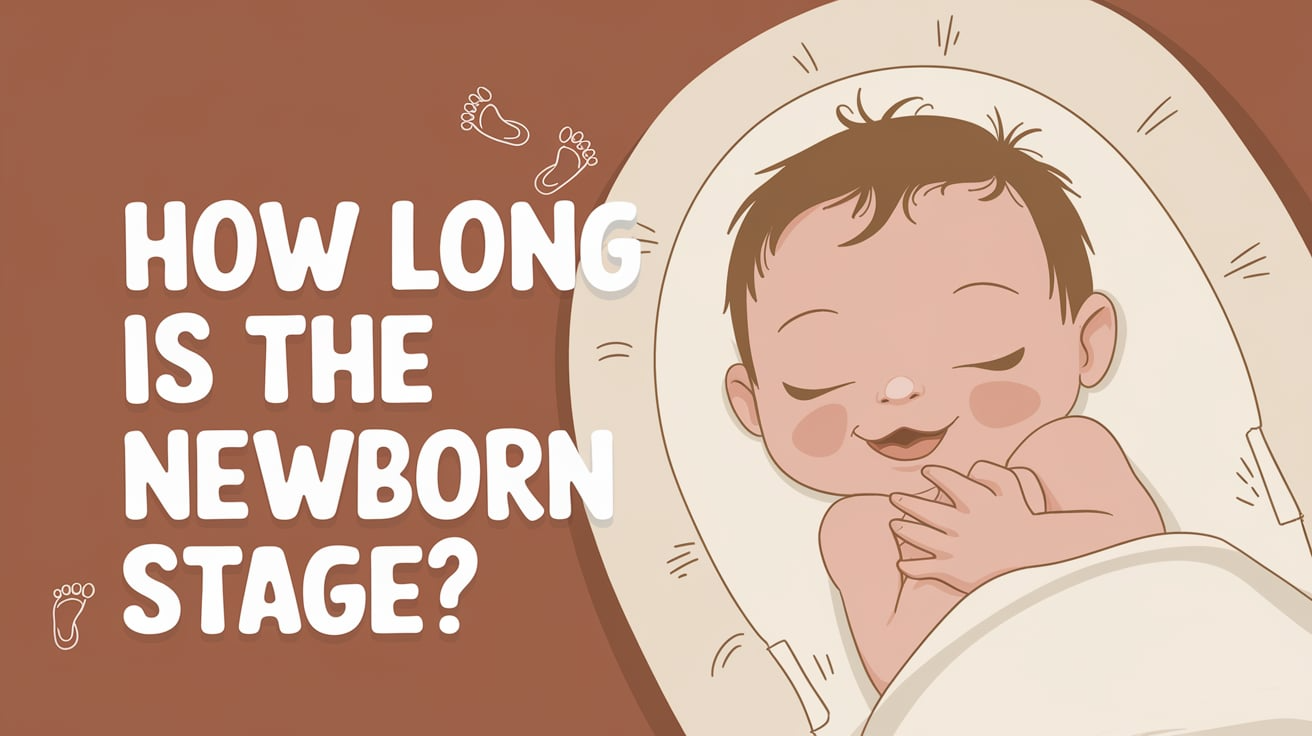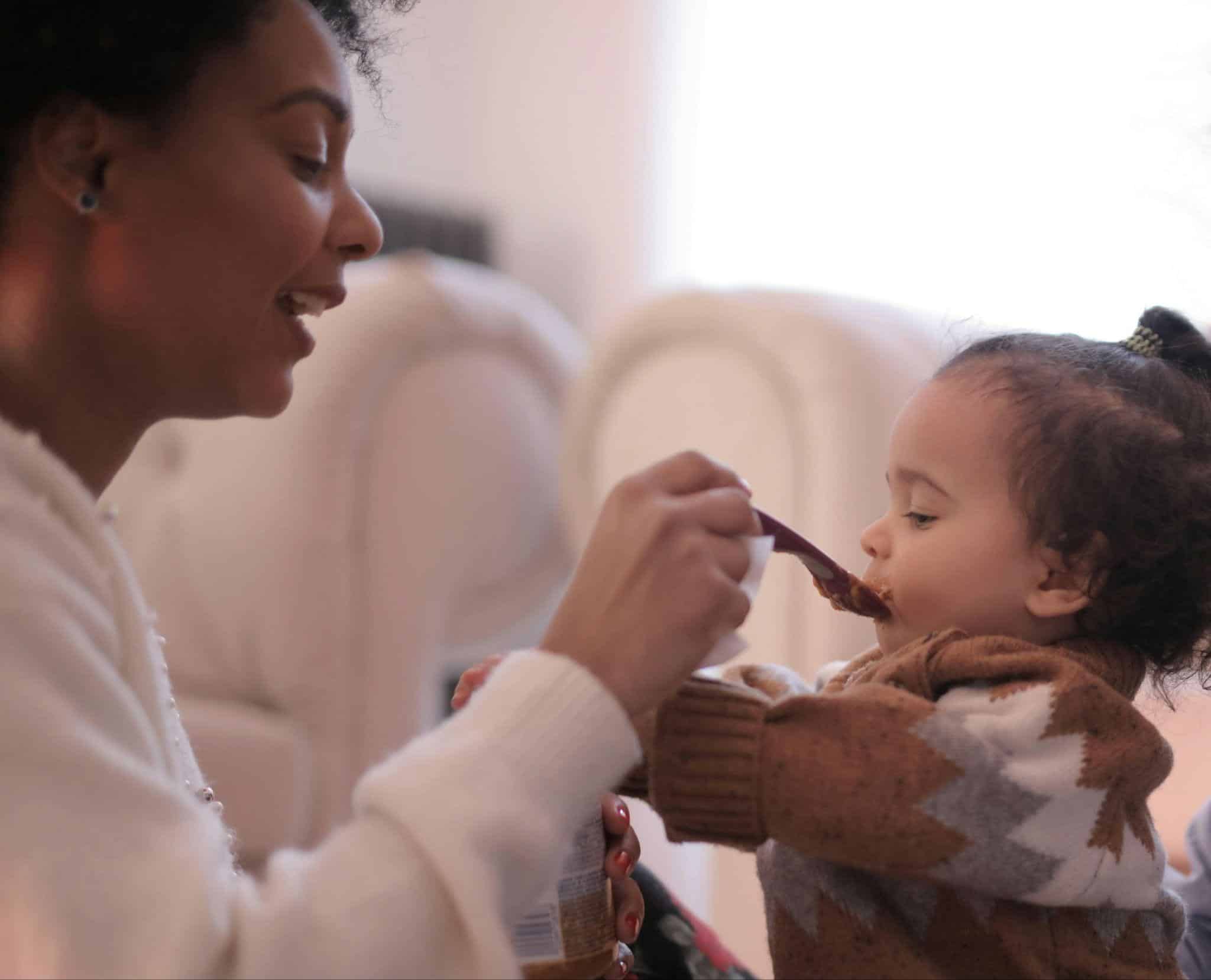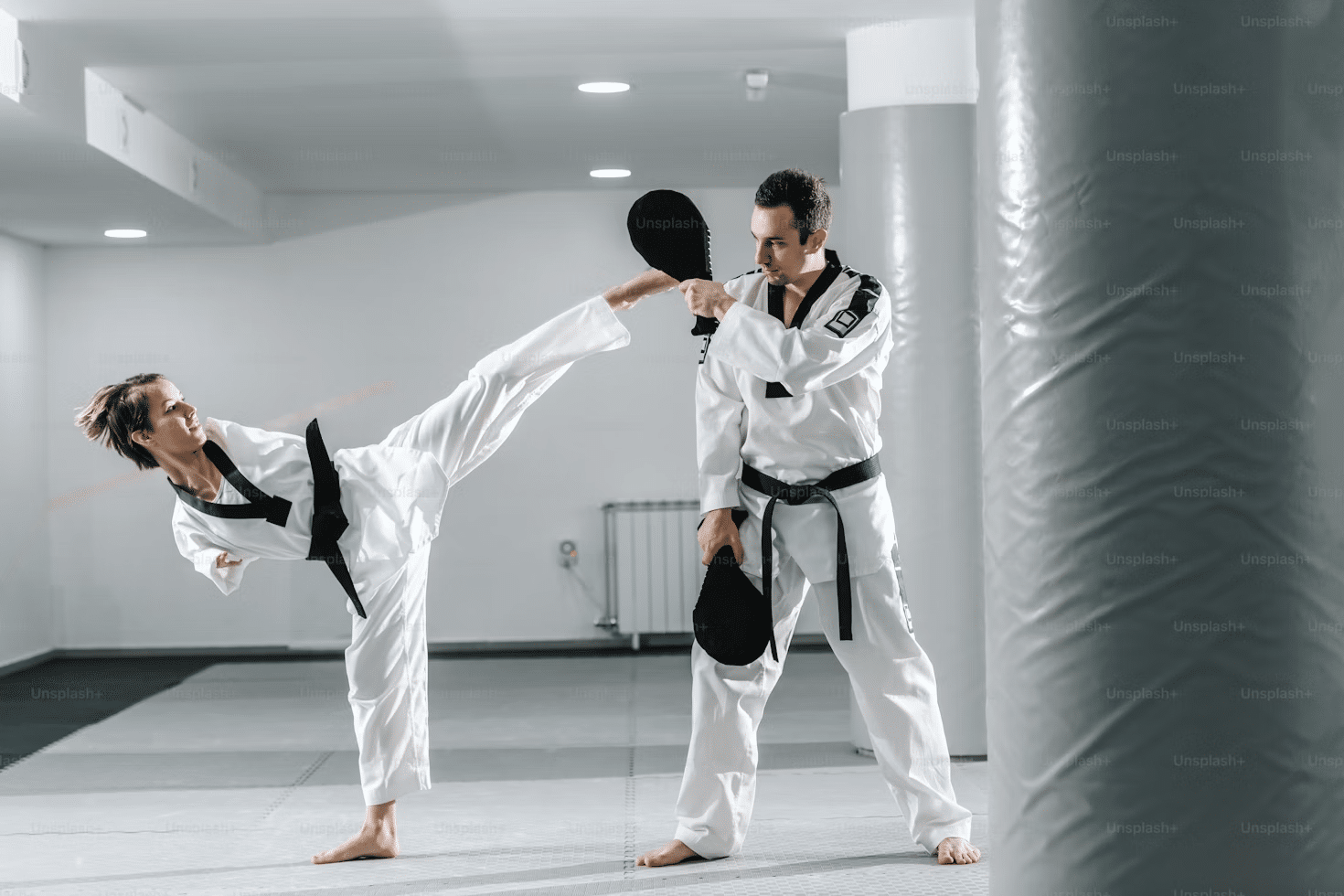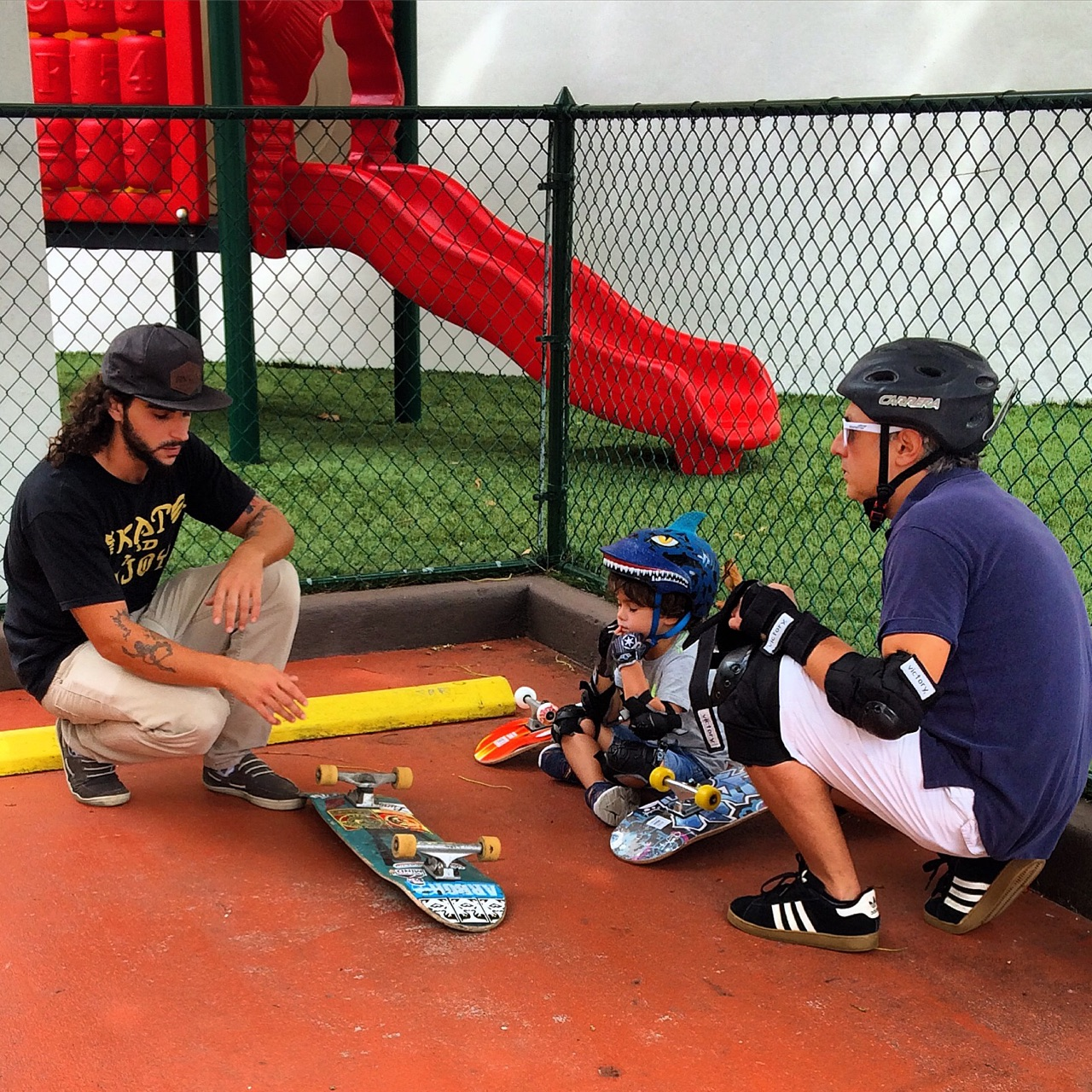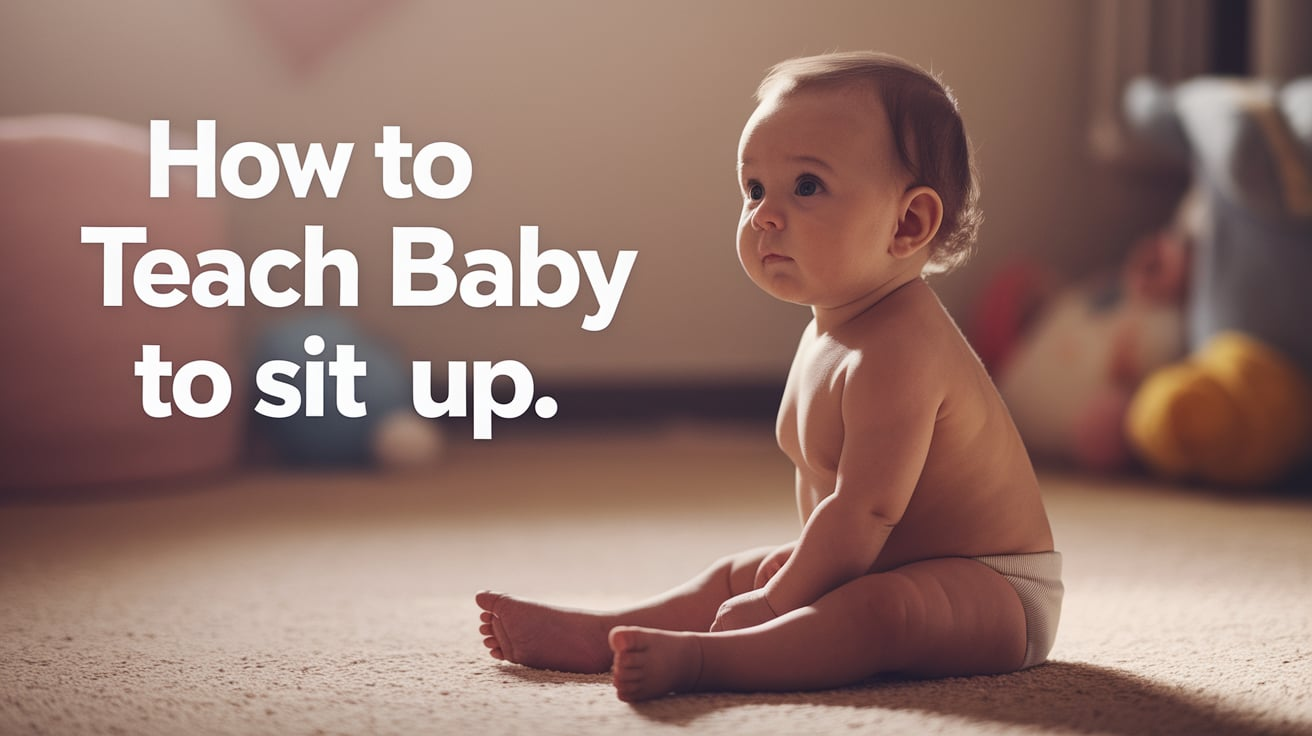
Teaching your baby to sit up marks an exciting chapter in their development, which typically occurs between 4 and 7 months of age.
This milestone represents more than just a physical achievement—it’s your baby’s first real taste of independence and a new way to interact with their world.
As your little one masters sitting, they gain a fresh perspective on their surroundings while developing crucial muscles that will support future mobility.
The sitting position strengthens the baby’s core, improves balance, and frees the baby’s hands for probe and play. While each baby follows a unique developmental timeline, you can support this process through gentle guidance and consistent practice.
By understanding the signs of readiness and implementing supportive techniques, you’ll help your baby build the confidence and strength needed for this fundamental skill that serves as the foundation for crawling, standing, and eventually walking.
When Do Babies Sit Up?
Most babies follow a predictable progression toward independent sitting, though the exact timing varies considerably between children.
General Timeline
| AGE RANGE | SITTING MILESTONE |
|---|---|
| 4–5 months | Most babies can sit with support (in your lap or with pillows) |
| 6–7 months | Many babies begin to sit unsupported for short periods |
| 8–9 months | Most babies can sit independently and may start pivoting or leaning to reach toys |
Factors Affecting Development
Several factors can influence when your baby masters sitting:
- Physical factors: Overall muscle tone, body weight, and proportions
- Temperament: Some babies are more cautious, while others are eager to try new positions
- Practice opportunities: Babies who get regular floor time and tummy time often develop sitting skills earlier
- Premature birth: Premature babies may reach milestones on a slightly delayed timeline
- Other health considerations: Certain medical conditions may affect muscle development
When to Consult a Professional?
While development varies widely, if your baby hasn’t started sitting up by 9 months, it’s not necessarily cause for concern. However, consider speaking with your pediatrician if:
- Your baby shows no interest in trying to sit
- They seem unusually floppy or stiff when attempting to sit
- You notice asymmetry in how they hold themselves
- They were sitting but had lost this ability
Early intervention can address any potential issues before they impact other developmental areas.
Signs Your Baby is Ready to Sit Up

Before attempting to teach your baby to sit independently, look for these readiness signs:
Strong Head Control
- Can hold their head steady and upright when held
- Maintains head position when pulled gently to sitting from lying down
- Holds head in midline (centered) without constantly leaning to one side
Tummy Time Progress
Tummy time serves as crucial preparation for sitting as it builds the necessary muscle strength in the neck, shoulders, and core.
Your baby may be ready to work on sitting if they:
- Can push up on arms with straight elbows during tummy time
- Can hold chest off the floor for extended periods
- Show signs of wanting to push up into a crawling position
Other Readiness Indicators
- Shows interest in being upright
- He enjoys being propped into a sitting position
- He tries to pull forward when lying on their back
- Can roll from back to side or tummy
- Seems frustrated in lying positions
How to Teach Your Baby to Sit Up?

Preparation
Before beginning sitting practice, ensure you create a safe environment:
- Select a firm but padded surface (a carpeted floor with a play mat works well)
- Remove any hard or sharp objects from the practice area
- Have plenty of pillows or cushions available to surround the baby
- Choose a time when baby is well-rested, fed, and alert
- Keep favorite toys nearby for motivation and distraction
Starting Early: Building Foundation Skills
Even before your baby shows all readiness signs, you can begin building the foundation for sitting:
- Daily tummy time: Start with short sessions (3-5 minutes) multiple times per day, gradually increasing duration as baby tolerates it.
- Assisted sitting in your arms: Hold baby in supported sitting positions during routine activities.
- Carrying upright: Use hip carries and upright holds to help the baby experience the vertical position.
Assisted Sitting

Method 1: Sitting on Your Lap
This provides maximum support while introducing your baby to the sitting position.
- Sit with your legs extended or in a cross-legged position
- Place baby facing outward on your lap
- Support their trunk with your hands on their ribcage or torso
- Ensure their back is straight and head aligned with their spine
- Start with short 5-minute sessions and gradually increase time
Method 2: Sitting Between Your Legs
This method provides stability while encouraging your baby to work on balance.
- Sit on the floor with your legs in a V-shape
- Place baby sitting between your legs, facing outward
- Your legs provide side support while allowing baby to practice sitting upright
- Keep your hands ready to provide support if they begin to wobble
- Place engaging toys within reach to encourage baby to sit longer
Assisted Sitting With Reduced Support

As your baby gains strength, gradually decrease the amount of support you provide:
- Start with both hands supporting baby’s upper body at chest/ribcage level
- As they gain confidence, lower your hands to support at waist level
- Eventually, transition to supporting with just fingertips at their lower back
- Always remain attentive and ready to catch baby if they begin to topple
Tips for this stage:
- Keep sessions short but frequent
- Watch for signs of fatigue (increased wobbling, fussiness)
- Celebrate small improvements with positive reinforcement
- Return to more support if baby seems frustrated
Active Sitting
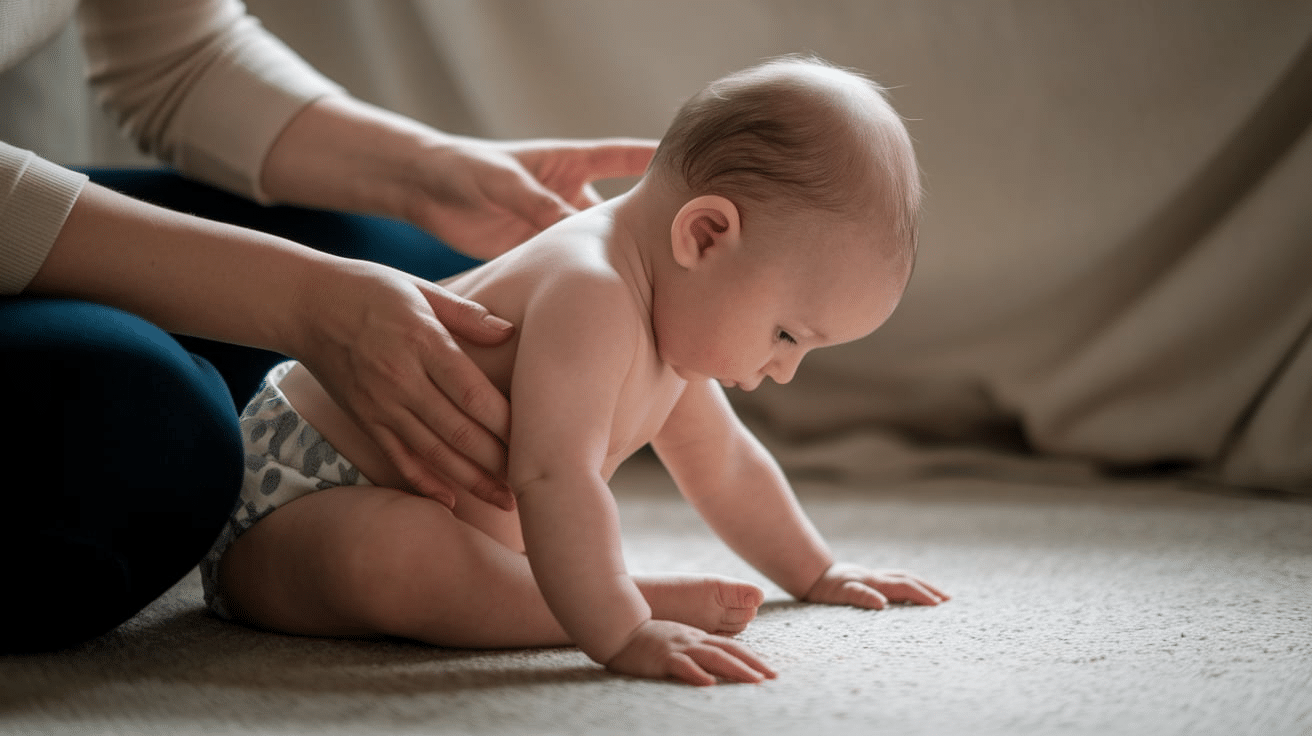
Once your baby can maintain a seated position with minimal support, introduce gentle movement to help develop balance reactions:
- While baby is sitting with minimal support, gently and slowly tilt them slightly to one side
- Allow them to work to regain their center of balance
- Repeat in different directions (left, right, slightly forward)
- Always keep your hands close to provide support when needed
This practice helps develop the protective reflexes babies need to catch themselves when they begin to fall.
Active Sitting With Toys
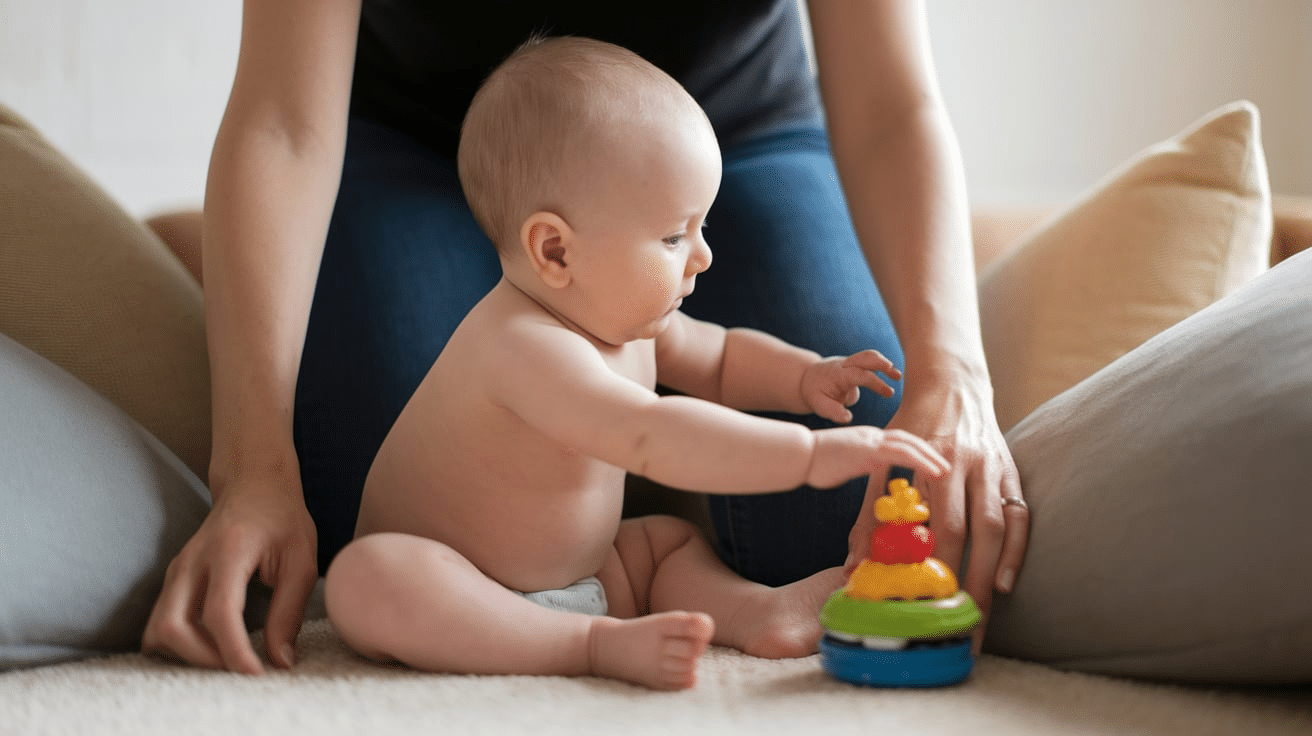
Using toys makes sitting practice more engaging and purposeful for your baby:
- Position interesting toys just within reach to encourage baby to maintain balance while playing
- Place toys slightly to the sides to encourage weight shifting and trunk rotation
- Use toys that require two hands to manipulate, which naturally improves stability
- Try toys that make noise or light up to maintain interest during longer sitting sessions
Suggested activities:
- Stacking blocks while sitting
- Reading board books together
- Playing with textured balls or toys with different sounds
- Simple cause-and-effect toys that reward baby’s manipulation
Gradually Reducing Support
The final phase transitions the baby to independent sitting:
- Create a “cushion nest” with pillows surrounding baby but not directly supporting them
- Position yourself behind baby, ready to provide support if needed
- Gradually increase the time baby spends sitting with no physical support
- Eventually remove surrounding pillows one by one as confidence builds
Tips for success:
- Keep the floor surface soft
- Stay within arm’s reach at all times
- Have toys ready as a distraction if the baby becomes aware of their independence
- Limit independent sitting practice to 10-15 minutes initially
When to Worry if Baby Is Not Sitting Up?

Normal Developmental Variations
It’s important to remember that developmental timelines are guidelines, not strict rules:
- Some babies focus on other skills first (like language or fine motor skills)
- Some babies skip sitting and move straight to crawling
- Family history may include patterns of later physical development
Signs That May Warrant Professional Attention
Consider consulting your pediatrician if you notice:
- No progress toward sitting by 9 months
- Consistent leaning or falling to one side only
- Obvious discomfort when placed in a sitting position
- Regression in previously acquired sitting skills
- Significant asymmetry in muscle tone or movement
- Inability to hold head steady in an upright position by 6 months
Professional Support Options
If you have concerns about your baby’s development:
- Start with your pediatrician for an assessment
- Ask about referrals to pediatric physical or occupational therapists
- Inquire about early intervention programs in your area
- Request developmental screening tests if appropriate
Early support can make a significant difference, so don’t hesitate to seek professional guidance if you have concerns.
Final Tips for Successful Sitting Training
Consistency Is Key
- Incorporate sitting practice into your daily routine.
- Practice at the same times each day when possible.
- Short, frequent sessions (5-10 minutes) are more effective than occasional long ones.
- Make sitting practice part of playtime rather than a separate “exercise.”
Follow Your Baby’s Lead
- Respect your baby’s tolerance and readiness
- Never force positions that cause distress
- Take breaks when baby shows signs of fatigue
- Celebrate effort rather than just achievement
Create a Safe Environment
- Always practice on soft surfaces
- Remove hazards before beginning practice
- Stay within arm’s reach during all sitting activities
- Have cushions ready to catch potential falls
Make It Fun
- Use animated facial expressions and encouraging words
- Incorporate favorite toys and books
- Sing songs during sitting practice
- Join baby on the floor to make it a shared activity
Conclusion
Guiding your baby through the sitting milestone is a rewarding trip that strengthens not only their physical abilities but also your bond as you celebrate each small victory together.
Remember that patience and consistency are your greatest tools. Some babies master sitting in weeks, while others take months.
The techniques outlined in this guide provide a framework but always follow your baby’s lead and readiness alerts.
As you support your little one’s efforts through gentle assistance, engaging toys, and gradual independence, you’re not just teaching them to sit; you’re nurturing their confidence, body awareness, and problem-solving skills.
While independent sitting represents an important achievement, it’s the process—those precious moments of determination, wobbly attempts, and triumphant smiles—that creates lasting memories.
Trust your instincts, enjoy the travel, and know that with your loving guidance, your baby will sit up when they’re perfectly ready.

